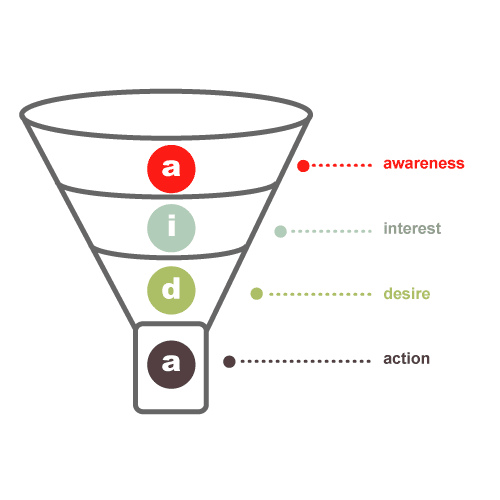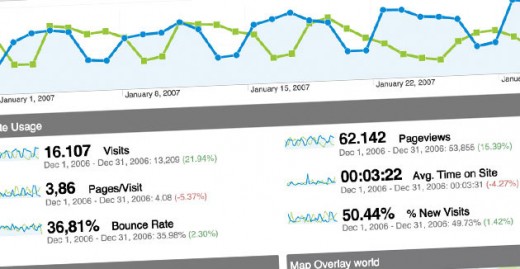What is PPC Advertising and How Does It Relate to the Sales Funnel?

What is PPC?
PPC stands for Pay-Per-Click and is actually an advertising platform used on websites and blogs. Advertisers create PPC ads and post them online through a third-party advertising network like Google AdWords or Facebook Ads. When visitors click on the PPC ad, a certain amount of money is paid to the affiliate network. The visitor that clicks on the PPC ad is then taken to the advertiser's website, blog, email sign-up form or landing page. It is the intent of the advertiser to have the visitor complete some type of action after clicking on the PPC ad, whether that action be buying a product, filling out a form, completing a survey, etc.

How Does PPC Advertising Fit Into the Sales Funnel?
Many assume that the main objective of a PPC ad is to generate sales conversions. In actuality, the main goal of a PPC ad is to move visitors out of the sales funnel "universe", which is the area surrounding the sales funnel and which is located outside of it, and place them at the very opening of the funnel, or the awareness area. Please click on the following link for more information about the online sales funnel.
Looking at the sales funnel figure to the right, note that the funnel opening does not concern itself with making a quick sale but rather with making the customer aware of the product. Once awareness is generated, the customer's interest in the product can be piqued via targeted emails, webinars, podcasts, etc. However, the customer cannot become interested in a product that s/he is not even aware of. That's where PPC advertising comes in. A PPC ad might ask the customer to sign up for an email newsletter, for example. This will get the ball rolling on gaining customer interest. Alternately, the customer could be asked to sign up for a free trial of a product or service, allowing him or her to try the item for free. Some advertisers offer free samples, research information, or even entire seminars. However, the whole point behind asking for that first "click" is to increase customer awareness.

Why are PPC Ads Used and by Whom?
PPC ads are actually used for a number of purposes, and one of the biggest is direct marketing. When it comes to direct marketing, the PPC ad allows the advertiser to obtain conversion statistics on pretty much the same day that the ad goes live. This allows him or her to change the ad copy as needed, perhaps making the call to action stronger or including a more compelling offer. Another reason that PPC ads are used in direct marketing is that they often appear in search engine results pages, or SERPs. Thus, the ads appear at the very same moment that a potential customer is searching for the advertised item.
However, PPC ads aren't just used for direct marketing. Advertisers will also utilize them in testing. Any number of items might be tested through PPC ads, but most commonly those items are keywords, ad copy, and different types of landing pages.
Keywords are tested because advertisers want to know which terms attract the most customers to their ad. Likewise, if a given PPC ad campaign is costing too much money per click, the advertiser can use other keywords that are cheaper for the ad yet attract the same amount of traffic. Ad copy consists of the actual ad message. Advertisers may wish to try several different messages before running the message that produces the most interest. Finally, landing pages are key to gaining customers' interest in the advertised product or service. Advertisers typically try out several different landing pages to figure out which one attracts the most attention (i.e., clicks).
Finally, PPC ads are often used to make other marketing channels more profitable. After using PPC ads to find out what keywords and ad copy are important to customers, an advertiser can capitalize on this information in a flyer, radio or magazine ad. Thus, information learned online can be applied to advertising created offline.

Three Major Advantages of PPC Advertising
There are some major advantages to PPC advertising. They are as follows:
- Performance-based payment. PPC advertising has the great advantage of being based on performance; in other words, the advertiser is charged only when a visitor does something. If there is no public interest in the ad, no money is paid to the advertising network. By comparison, ads placed on billboards or through TV and radio are harder to gauge in terms of their overall performance and customer response.
- Results are easily tracked. PPC ads are created and tracked via an analytics program that calculates the number of visitor clicks, landing page bounces, time of visit, and number of pages viewed. If any products are viewed or purchased, those data are also reported. The advertiser knows exactly how well the PPC ad is doing at all times.
- Cost control. PPC advertising is relatively inexpensive compared to other forms of media. For example, a TV ad placed during the Super Bowl can cost millions of dollars yet result in no new or returning customers. Even a simple radio ad takes a good deal of money to design, record, and then place for a given number of spots on a radio station. When it comes to PPC ads, the advertiser decides how much s/he is willing to pay. If the amount of money being paid per click is too much, there are ways to reduce that cost. Such cost-cutting measures will be discussed later on in this PPC article series.
- Quick and easy set-up. A PPC ad can be created and launched by virtually anyone. Since the PPC ad is text based, all that is required is a computer with a keyboard and an Internet connection. If the advertiser has an idea of what s/he would like the ad to say, the work is almost done. All that is left is to do is to choose the advertising network, how often the ad should be displayed, and select specific keywords that categorize the ad for search engines. Once this is completed, the ad campaign go live in a matter of hours.
- Ads can be tested. The advertiser can test different keywords, ad copy and landing pages on their ability to attract more traffic, yield higher sales conversions, and cost less money per click. These data can be utilized to better design other ad media such as newspaper ads, radio spots, etc.
What are the Disadvantages of PPC Advertising?
Of course, although PPC advertising does offer many advantages to the advertiser, there are some disadvantages as well:
- Creating an effective PPC ad can be challenging. PPC advertising sounds relatively easy at first: you simply pick your keywords and ad copy and link the ad to a landing page. However, if you're not careful, you could end up spending quite a lot of money for each visitor click. There are certain keywords that some ad networks, like Google AdWords, charge up to $100 per click! Alternately, if you choose keywords on which there is a lot of competition, your ads will go live and never be seen, due to them appearing at the bottom of the SERPs.
- PPC ads must be constantly monitored. Ad networks will help you set up a range of costs per click for your PPC ad, but unless you limit your ad costs per day, your PPC ad could easily cost you thousands of dollars in no time. Therefore, it is imperative that you monitor your PPC ads closely and daily to ensure that you stay within your budget.
- You will need to fine-tune your website. PPC ads can quickly bring up issues of website functionality as well as overall competitive disadvantages. Your sales landing page could also become a source of trouble if it lacks a clear call to action, resulting in lots of ad clicks with no eventual conversions.
- Ad copy limitations. PPC ads offer very little room for company or product descriptions; you have a limit of 25 characters for the title and only 70 characters for the ad description. Thus, many PPC ads resort to outrageous or even false claims in order to attract visitor attention. Many ad networks do not offer the option of adding an image to the PPC ad.
- Competitors ads appear "next-door". Unless you somehow distinguish your company or its products as different from that of your competitors, competitor PPC and other ads will appear alongside your own. However, this is also a risk with traditional marketing methods.
Summary
PPC ads are becoming a very popular means of online advertising. Such ads fit into the online sales funnel by attracting the attention of visitors and thus increasing consumer awareness of an advertiser, a company and/or certain products. In essence, PPC ads transport visitors from the "universe" outside of the sales funnel into its opening (where consumer awareness lies).
Overall, PPC advertising is easy, inexpensive and available to anyone with a computer and Internet connection. There are some challenges too, and this is why anyone who is embarking upon PPC advertising should first become acquainted with the criteria for good keyword selection, ad copy creation, and sales landing page design.








